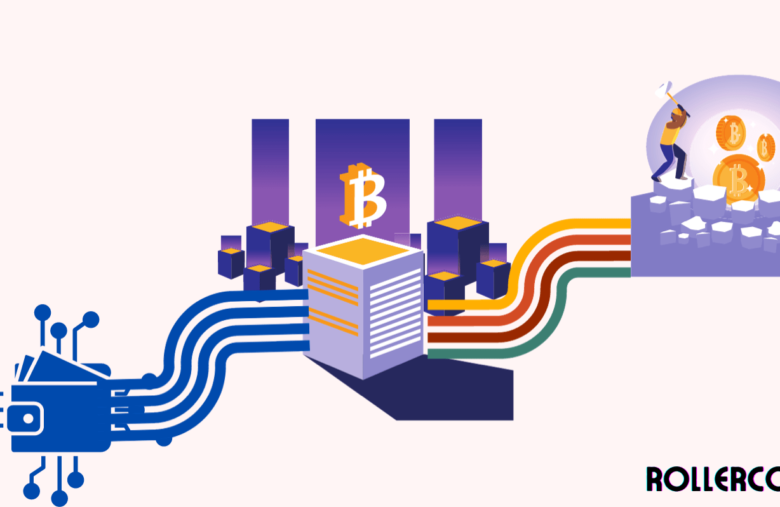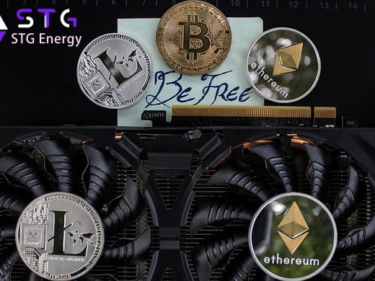Crypto Payments vs. Traditional Systems: Charting the Path Forward for Financial Transactions

Since the days of Bitcoin, crypto has come a long way and helped contribute to the financial payments ecosystem. As a result, the fintech sector has witnessed massive growth from the intersection of crypto, blockchains, and finance. This post aims to evaluate key indicators of this growth and how innovators are leveraging crypto payments in various sectors, including gaming, logistics, supply chain management, and distribution, in order to eliminate middlemen, enable real-time payments, increase transparency, boost community ownership, and support peer-to-peer transactions. If you are looking for a way how to start bitcoin mining for free, we will also highlight the benefits of a next-generation game called RollerCoin. RollerCoin is one of those modern games that takes advantage of cryptocurrency technology when distributing real-time micropayments.
In this article, we will learn about crypto payments vs. traditional systems. Both niches are considerations for evaluating the technology behind P2E games like RollerCoin. You will learn how crypto startups and traditional financial giants are disrupting payments.
Centralized and Decentralized Financial Ecosystems
Here, we will highlight the technologies that underpin traditional titans vs. crypto visionaries. Their perspective on crypto and traditional payments are also key points.
Centralized and Decentralized Financial Ecosystems
What are decentralized financial payment systems? Decentralized or crypto payments are financial transactions that take place via digital currencies. These payments could involve purchasing an asset, goods or services. Crypto payments ease cross-border transactions, real-time payments, and peer-to-peer transactions. Features include anonymity, decentralization, micropayments, low transaction costs, digital assets lending, and borrowing.
What are centralized financial payments? Traditional financial payments are financial transactions on the Web 2.0 infrastructure. These transactions involve conventional methods of payment, e.g., central-bank-issued currencies such as the USD, Euro, Yen, etc.
Key features are a bank account, physical currencies, intermediaries, non-volatile and no anonymity.
Cryptocurrency Payments: The Evolution of Payments
Cryptocurrency technology has evolved since the birth of Bitcoin in 2009. Bitcoin’s main purpose was to support P2P transactions. Blockchain technology ensured cryptocurrency transactions were immutable, transparent, secure, and anonymous.
As Bitcoin grew in popularity, programmers explored new ways to expand Bitcoin’s functionality, thereby giving birth to alternative cryptocurrencies like Ethereum, Litecoin, and Cardano. The majority of these altcoins were an improvement to Bitcoin. Some of the features they aimed to improve included scalability, affordability, and speed.
The popularity and adoption of cryptocurrency gave birth to the need for exchanges. Mt Gox and Coinbase were the earliest exchanges to emerge. Both exchanges helped ease the buying, selling, and trading of cryptocurrencies. These exchanges also offered wallet solutions for storing cryptocurrencies.
A barrier to crypto’s early adoption was the need for traditional payment integration. Thus, developers built payment processors for exchanging between crypto and fiat. This meant that one could now exchange their Bitcoin for dollars. Companies that pioneered this payment integration niche included CoinPayments and BitPay. Over time, virtual currency users felt the need for stable cryptocurrencies. One that was not subject to the rapid volatility of cryptocurrencies. This led to the creation of stablecoins. Usually, developers peg the value of a stablecoin to a stable currency like the US Dollar. In limited cases, the developers can peg the value of a stablecoin to a commodity like gold or oil.
Developers have continued exploring the power of cryptocurrencies and blockchain technology. Some of these use cases include:
- Autonomous smart contracts
- DEFI, lending, and borrowing
- P2E games
- Investment
- Trading
- Logistics and supply chains.
Traditional Payments
Traditional payments trace their history back to the barter trade days. Today, the paradigm of traditional payments has continued to evolve. People have felt the need for faster, less costly, and anonymous payments. Micropayments, remittances, and cross-border payments are some of the reasons driving crypto payments. Particularly when users want these payment transactions to take place in real time. Yet, some crypto payment features might not be possible without traditional payments.
Illustration of a perspective on crypto involving linking crypto and traditional payments:
M-pesa, a Web 2.0 payments platform, facilitates P2P crypto transactions for users in Kenya, thereby enabling them to withdraw or deposit Bitcoin to an exchange like Binance.
Cryptocurrency Payments and the RollerCoin Mining Simulator Game
As mentioned earlier, RollerCoin is a popular game in the Web 3.0 space that rewards users with crypto. This game enables gamers to mine crypto through its mining simulator. Cryptocurrencies power the platform to distribute real-time rewards to its players. According to the game’s site, these rewards are the RollerCoin native token (RTC) or an in-game asset. The player exchanges the in-game asset for crypto on the RollerCoin marketplace. Afterward, they can then change the crypto for fiat on a real exchange.
Traditional Titans vs. Crypto Visionaries: Conclusion
The evolution of cryptocurrency payments has gone through various changes. This evolution has transformed several industries, including gaming, finance, investment, and so on. With these advancements, games like RolleCoin continue opening new horizons for gamers. If you want to learn more about crypto P2E gaming, visit the official RollerCoin website.



